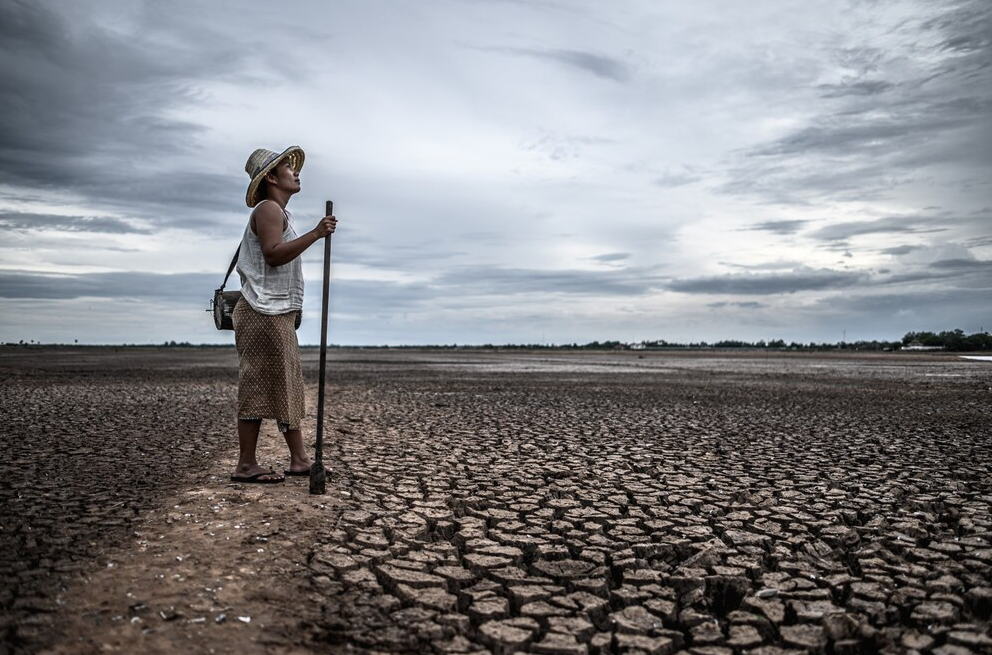Water shortage and particularly droughts are among the pressing challenges in the current world. They happen when there is a duration of dry seasons, which limits the supply of water and impacts the environment, farming, and residents. But just how hot can a drought get and what environmental consequences does it provoke? This blog explores the following as a research topic: an analysis of the ‘drought temperatures’ and the impact on the ecology.
“Droughts can cause temperatures to rise significantly due to reduced water availability and intensified heat waves. In 2020, extreme drought conditions affected over 71% of U.S. counties, with severe heatwaves exacerbating wildfires and agricultural losses. Water scarcity impacted 1.1 billion people globally, with 2.7 billion experiencing water shortages annually. Center for Science Education. National Drought Mitigation Center.”
ASPIS EMERGENCY PREPAREDNESS owned by Jose Caldero in the emergency management business industry serves the product or service of emergency plans, affiliate marketing sales of essential items, podcasts, and blogs. Their specific goal to be achieved is to assist people with preparation and recovery for a variety of emergencies. The key characteristics that define the brand’s voice & tone are being serious and helpful. Their brand slogan is “Preparation is Paramount”.
Meaning of Drought Temperature
In addition, droughts mean not only the shortage of water, it are also associated with heat. It was past the middle of summer, and warm temperatures during a drought are much higher than those at this time of year. This happens due to:
Reduced Moisture in the Air:
Since there will be only a little precipitation, there will be no or very few clouds of water vapor in the sky. Since water vapor is a good greenhouse gas, the lack of the substance results in high temperatures.
High-Pressure Systems:
Continental high-pressure systems cause heat to accumulate in a cycle in which dryness results in increased temperature and the same as well.
Global Warming:
Climate change aggravates drought by increasing temperature around the world so heat stress events are more recurrent and acute.
How Hot Can A Drought Get?
In recent history, drought-hit regions have recorded scorching temperatures:
Death Valley, California (USA): It has the most record for the highest temperature ever recorded on the planet, with 134 degrees F or 56 point seven degrees Centigrade.
Australia’s Outback: Suffers from temperatures above 120oF or 49oC during episodes of severe dryness.
Sahara Desert, Africa: The area is typically arid and has not experienced the extreme temperatures that have now tipped above 122 degrees Fahrenheit ( 50 degrees Celsius) due to drought occurrences.
Preliminary Implications of Drought-Accompanied
Drought heat affects ecological health and availability of land and water resources with commonly reported effects including;
Degraded Soil Quality
Drought-induced heat bakes the soil, causing:
- Soil Erosion: Lack of vegetation cover exposes the topsoil to the wind that Suffolk it away.
- Loss of Fertility: Here nutrients become less useful and the fertility of the soil is reduced.
- Desertification: Long-term effects experienced are the conversion of acquirable land into deserts through drought.
Water Resource Depletion
Hot drought conditions drastically reduce water availability:
- Drying Rivers and Lakes: Temperature rises result in the speedy reduction of reservoirs and streamage.
- Lower Groundwater Levels: As the pressure for the water supply is up, aquifers are used up.
- Water Conflicts: The people and the nations may have conflicts of interest regarding water and their sharing capacity.
Forecast for wildlife and Biodiversity Loss
Wildlife suffers significantly due to reduced water and food supplies:
- Habitat Destruction: Disasters such as droughts shrink wetlands and forests to accord living space to wildlife.
- Species Extinction: The species in question may die out because of the loss of habitat and inability to feed.
- Migration Shifts: Through movement, creatures may change ecosystems as they move in search of better living conditions.
Wildfires and vegetation destruction
Drought-induced heat creates perfect conditions for wildfires:
- Increased Wildfire Risk: Dry vegetation makes a good fuel and therefore leads to uncontainable wildfires in the forests.
- Forest Ecosystem Collapse: Tropical forests may be completely cut down and the outcome will be embarrassing in terms of carbon dioxide absorption and oxygen release.
Challenges to Agricultural and Food Security
Farmers are among the hardest hit by drought heat:
- Crop Failures: They shrivel for lack of water and heat stress.
- Livestock Loss: Animals might die of thirst and starvation.
- Rising Food Prices: Feeding the World is a problem at the moment and results in high food prices and food scarcity.
Climate Feeding Back And Its Implications On The World
Heat in droughts means that temperatures escalate, leading to the exploitation of feedback loops that fuel global warming. For instance:
- Reduced Carbon Absorption: Growing the emission of carbon in the atmosphere cuts down with the cutting down of trees and vegetation.
- Increased Greenhouse Gases: CO₂ and methane emissions to the atmosphere as observed during wildfires are, to the largest extent, alarming.
- Melting Ice Caps: The weather has been gradually increasing across the earth, and this has various effects such as the melting of polar ice caps which leads to rising levels.
Reducing the Impact Of Drought Heat
While droughts cannot be entirely prevented, steps can be taken to reduce their environmental impact:
- Water Conservation: Drip irrigation scheme and rainwater management and conservation technologies.
- Reforestation: Raising more trees to act as a natural cover and enhance carbon capture in the ecosystem.
- Climate Adaptation Policies: Policies should hence be implemented by governments in order to reduce the effects of climate change and prepare for the occurrence of drought.
- Sustainable Agriculture: Providing drought-tolerant seeds and extension on new methods of farming.
Conclusion
It is astonishing to see, how hot can a drought get. This is because they are capable of turning extremely hot posing severe losses to the environment. Due to the current warming of the climate, outbreaks of drought heat-related effects are becoming prevalent and problematic in the earth’s ecosystems and on human beings. ASPIS EMERGENCY PREPAREDNESS awareness of the causes, effects, and potential solutions such as expert emergency preparedness solutions are critical to dealing with this emerging problem and protecting the planet for many years to come.
Frequently Asked Questions
What is drought temperature associated with?
In addition to lack of water, droughts are also linked to heat. Warm temperatures during a drought are far greater than those during this time of year, and it was past the middle of summer.
Drought occurs due to?
It happens due to:
- Less Air Moisture
- Systems Under High Pressure
- Warming of the planet
What does heat from drought bake the soil lead to?
Drought-induced heat bakes the soil causes;
- Soil Erosion: When there isn’t any plant covering the topsoil, it is vulnerable to wind erosion.
- Fertility Loss: In this case, the soil’s fertility declines, and nutrients lose some of their usefulness.
- Desertification: The conversion of acquirable land into deserts due to drought is one of the long-term impacts.
What does heat in droughts mean?
It implies that as temperatures rise, feedback loops that contribute to global warming are exploited.
How can the impact of drought heat be reduced?
The steps taken to reduce their environmental impact:
- Water Conservation
- Reforestation
- Climate Adaptation Policies
- Sustainable Agriculture






